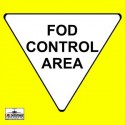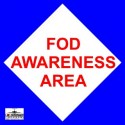NAFPI conference participants call for cooperation between airlines and airports
Dave Larrigan, of the Vancouver International Airport, says airports and airlines must work together to eliminate FOD. Too often the airlines leave it up to the airports. “Airports must have the support of airport tenants,” Larrigan said. Airline employees and service vendors must be well-versed in FOD issues because a good deal of FOD is generated on the ground at gates and taxiways—name badges, pens, cups, catering supplies, baggage parts, etc.
Outside contractors need to be educated about FOD, analyst says
Many people who need to be educated about FOD are people who don’t know what it is, yet are working in positions that are sources of FOD. For example, landscapers at one airport wanted to plant flowers along the runway without realizing the flowers would draw birds and
likely result in an increase in aircraft bird strikes. An expansion of educational efforts to include people servicing aircraft, building contractors, landscapers, etc., would go a long way in reducing FOD, said one conference speaker.
FOD cost estimates emerge despite lack of tracking
No one knows for sure how many engine failures are caused by FOD ingestion or how often FOD damages other airplane parts. The fact is, there is a lack of documentation and tracking. However, Squadron Leader Richard Friend, of Royal Air Force in the UK, currently on loan to the U.S. Air Force Research Lab at Wright Patterson AFB, estimates direct costs (such as engine damage) worldwide (military and civilian) at $4 billion annually.



